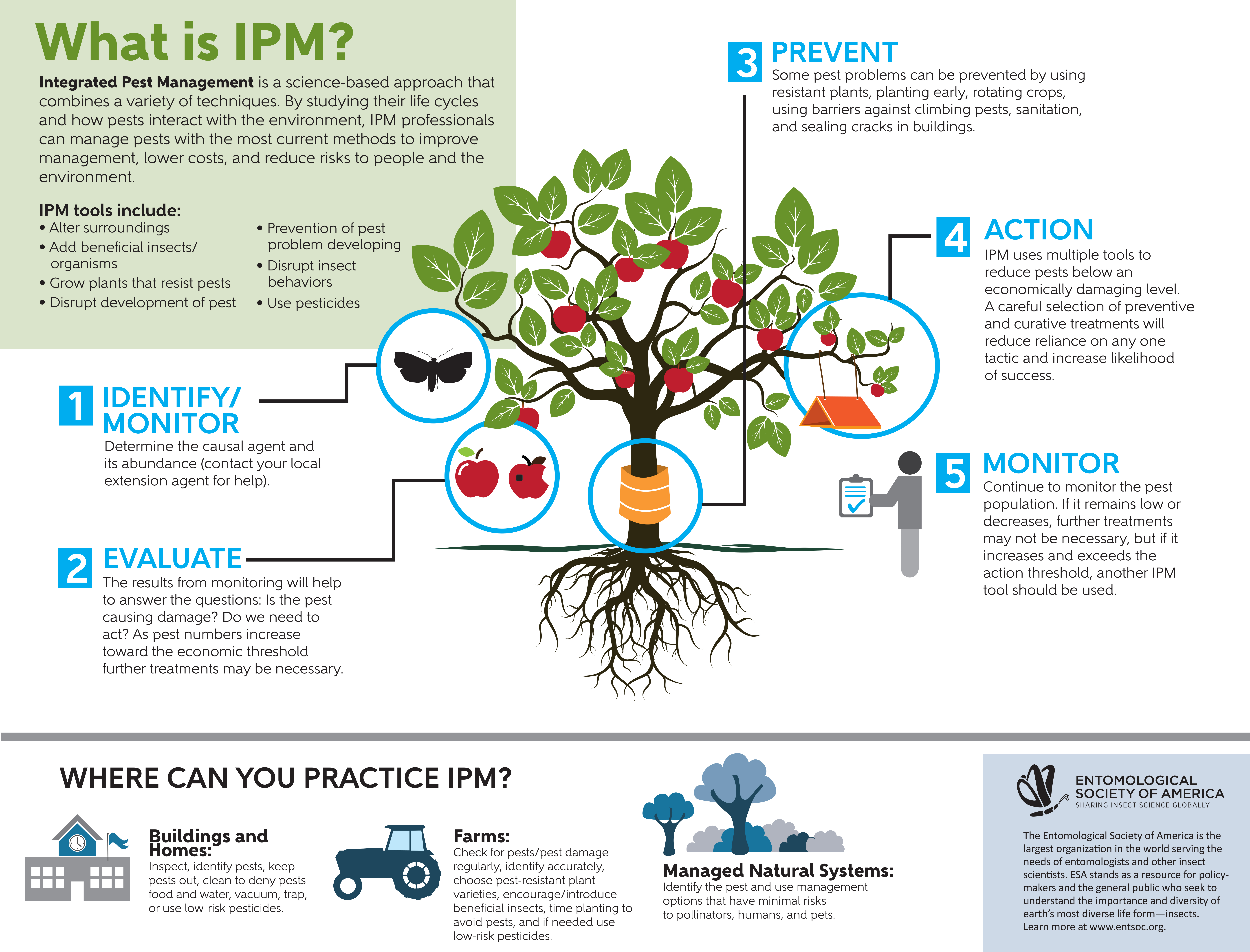The Function Of Bug Exterminators In Environmental Sustainability
The Function Of Bug Exterminators In Environmental Sustainability
Blog Article
Written By-Nguyen Dalsgaard
You might believe that parasite exterminators are only worried about eliminating bugs, yet their function goes beyond that. They play a critical component in ecological sustainability.
By utilizing integrated insect administration techniques, they not just remove insects yet additionally guard biodiversity.
In addition, they employ lasting bug elimination techniques to mitigate ecological risks.
So, next time you wonder about the value of pest exterminators, remember their payment to a greener and healthier world.
The Significance of Integrated Bug Monitoring
You must comprehend the significance of integrated bug management in preserving a lasting atmosphere.
Integrated Bug Monitoring (IPM) is a strategy that focuses on stopping and managing pests while decreasing making use of unsafe chemicals. By executing IPM approaches, you can properly take care of bug populations without creating damage to the setting.
One essential element of IPM is the use of biological controls, such as killers and bloodsuckers, to naturally control pest populations. This reduces the need for chemical pesticides, which can have damaging results on wild animals and ecosystems.
In addition, IPM promotes the use of social and physical controls, such as crop rotation and exclusion strategies, to avoid bugs from coming to be a trouble in the first place.
Safeguarding Biodiversity With Parasite Control
We can guard biodiversity with reliable bug control approaches that prioritize the conservation of natural ecological communities. By employing responsible pest control practices, we can shield and preserve the delicate equilibrium of species within our setting. Here are 3 ways in which parasite control adds to protecting biodiversity:
- ** Maintaining native plants and animals ** - By targeting invasive varieties that intimidate native plants and animals, insect control assists make certain the survival of indigenous species and maintains the all-natural variety of communities.
- ** Stopping the spread of diseases ** - Regulating pests such as mosquitoes and ticks reduces the risk of illness spreading to wild animals populaces, securing biodiversity and preventing possible episodes.
- ** Saving threatened species ** - By taking care of bugs that victimize or take on threatened species, insect control initiatives can improve the opportunities of survival and promote the recovery of vulnerable populaces.
With https://ucreview.com/residential-pest-control-services-market-2023-trends-with-analysis-on-key-players-pro-interactive-services-india-pvt-ltd-pest-relief-india-pvt-ltd-chaitra-civil-ventures-llp-gulshan-pest-hort/ , we can actively contribute to the conservation of biodiversity and the sustainability of our environment.
Mitigating Environmental Risks With Lasting Bug Extermination Techniques
By utilizing sustainable pest extermination techniques, you can efficiently alleviate ecological risks while guaranteeing the security and well-being of both people and the natural environment. Typical bug control approaches frequently involve using dangerous chemicals that can have harmful results on the environment.
Nevertheless, lasting insect elimination approaches concentrate on reducing these risks by using environmentally friendly options. For example, incorporated parasite monitoring (IPM) techniques prioritize using safe and eco-friendly products, in addition to natural killers to manage pest populaces. This technique not just minimizes the unfavorable effect on the setting yet additionally assists to preserve the fragile equilibrium of the ecological community.
Furthermore, sustainable bug elimination methods promote the conservation of biodiversity by targeting particular pests without damaging advantageous microorganisms. By adopting Rodent traps , you can contribute to a more sustainable and environmentally friendly strategy to pest control.
Conclusion
You are the pest exterminator, the guardian of nature's harmony. With incorporated parasite monitoring, you stabilize the fragile ecological community, making certain the survival of diverse varieties.
Via lasting methods, you reduce ecological threats, maintaining the fragile balance intact.
Like a symphony conductor, you manage the rhythm and circulation, securing the biodiversity that dancings in best harmony.
With every action you take, you create a globe where nature flourishes, where insects retreat, and where sustainability reigns supreme.
